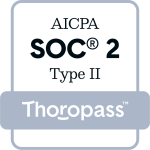etween developing and maintaining a mobile app, corporations stand to spend thousands on a service that might not be used very often.
One user’s tweet went viral when she cited the popular opinion that customers don’t want to download native apps for each business they support. As customers become increasingly frustrated with the process of downloading an app for simple use cases, potential sales and opportunities are now being lost.
Now, what if I told you there was a better way?
Native smartphone apps have a lot to offer any corporation, but the cost of building, launching, and maintaining a good native app can be far too high for most organizations to handle — especially considering the vast majority of native apps are not often used.
Corporations lacking the resources for a fully native app can still offer their customers the integrated, efficient, and enjoyable experiences the platform provides through channels consumers will actually use. There is a way to drastically cut the cost of app-like experiences and it’s going to transform the way companies interact with customers in 2022
“There is a way to drastically cut the cost of app-like experiences and it’s going to transform the way companies interacted with customers in 2022.”
$170,000 And Up
According toSDP Load, the cost of building a native app can range from around $40,000 to $300,000 depending on the complexity. That’s just the beginning.
A recent study fromUpCitysurveyed 300 United States-based developers who specialize in creating mobile apps asking for more insights into the overall process and costs of building a native app. Here is what they found:
- 50% of development companies require a discovery phase before they proceed with a mobile app development project
- 29% of companies noted that the app development discovery phase costs $10,001-$15,000
- 43% of development companies also require a minimum project size to move forward
- 26% of respondents note that their minimum project size costs $5,001-$10,000
The process of discovering and building an app is not only highly complex, but it is extremely costly for your business. As stated on Forbes.com, approximately only 1% of all native apps are successful for the company.
What’s The Use?
Corporations stand to spend hundreds of thousands of dollars to build and develop an integrated native app, but what happens once it’s up and running? One of the biggest challenges to the success of an app is getting it into the hands of consumers once the app has been created. For all that cost to be worth it, consumers have to actually download the app (and keep it on their phone).
Modern consumers simply don’t keep most of the apps they initially downloaded. According toQuettaand Silicon Valley analyst Andrew Chen, the average app loses 77% of its users within 3 days of installation, 90% within the first 30 days, and an astounding95% of users are lost within 90 days of installation.“The other way to say this is that the average app mostly loses its entire user base within a few months,” Chen says. “Which is why of the >1.5 million apps in the Google Play store, only a few thousand sustain meaningful traffic.”
Adifferent studyby Localytics is just as dismal. They found nearly 1 in 4 app users abandon an appafter only one use.“A whopping 62% [of users] will use an app less than 11 times,” the study says.
“This is not a sustainable business model.”
Why the terrible usage rates? The barrier to using native apps doesn’t stand up against our instant gratification, on-demand culture. Consumers don’t want apps on their phones they don’t use regularly. The download isn’t worth cluttering their home screens and slowing down their smartphones. That’s where Zappix technology comes in.
An Instant Alternative
There is another way to give customers the rich, enjoyable, app-like experience they crave without the prohibitive costs and unwanted downloads. Zappix’s On-Demand Apps let corporations provide instant access to branded, integrated, app-like experiences whenever consumers want without forcing them to download and keep unwanted native apps.
With Zappix, corporations can provide their customers with an instantly available app-like experience through visual self-service, website links, email signatures,proactivetext and email messages, and other channels. Once customers are finished with an interaction, the On-Demand Apps disappear from their phones altogether. Cloud-based Mobile On-Demand and Visual Self-Service technology provide all the functionality companies want out of an app at a fraction of the cost and without the barrier to the use of required downloads.
Zappix built its technology from the ground up to avoid many of the factors driving up the cost of native apps. Their open, cloud-based platform makes integrating with any CRM or backend system fast and straightforward. The drag-and-drop Zappix Studio makes designing and building a Self-Service solution simple and straightforward. The two technologies combine to make maintenance and future development a breeze as well. Changes and edits that would otherwise take months and thousands of dollars to accomplish can now be completed in a couple of hours and published instantly. Customers don’t need to upgrade their apps and corporations don’t need to have developments approved by app stores when changes are made when they use Zappix solutions.
Zappix’s Goal
The customer experience is paramount. Zappix is constantly working to make its Visual Self-Service solutions more enjoyable and effective for its clients and their customers. That experience can only be delivered to consumers if its customers can afford to implement their solutions
A cost-effective solution delivered quickly and effectively is the definition of Zappix Visual Self-Service. The initial deployment schedule (4 weeks on average) and the time it takes to make changes on live solutions (minutes to hours) have been built to move as efficiently as possible. Speed is important to more than just the clients. On-Demand technology allows end customers to enjoy the service when they need it, on-demand, without waiting for a download.
Thedigital revolutioncoming to apps and customer service, and everyone can afford to join.






